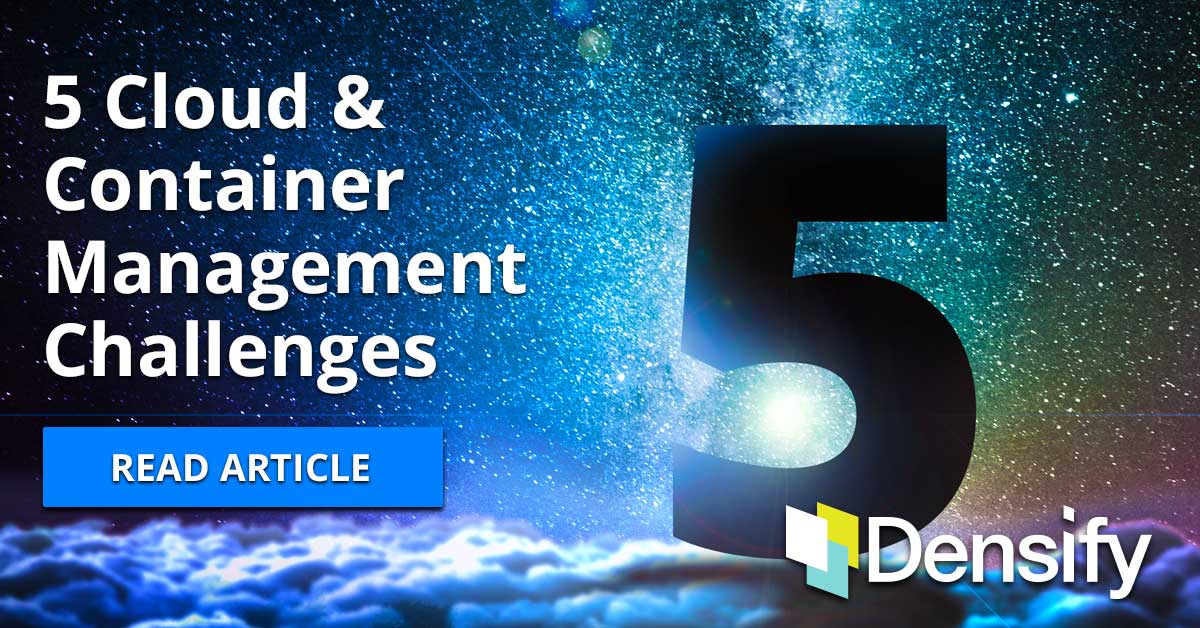Cloud & Containers: Thinking in Real Time
Cloud computing has transformed how enterprises think about infrastructure. A decade ago, IT professionals had to make server projections months or years in advance, deciding on the types of servers they’d need. That would in turn be largely determined by the services required for their business needs and expected loads those servers would bear.
Cloud computing has changed the game. Enterprises can focus on what resources and services are needed in the moment, and the need to forecast workloads is greatly reduced. However, cloud computing is no cure-all for IT challenges, and presents many problems unique to the new landscape. Here are the top five resource management challenges you need to address today.
Challenge 1: Underprovisioned & Overprovisioned Cloud Resources
With so many options available in the cloud, it can be difficult to find the optimal purchasing decision for the task at hand. While underprovisioning can slow important workloads to a crawl, overprovisioning can make costs skyrocket.
Additionally, because of the high availability of servers and environments, it can be tempting to purchase small chunks as needed. Giving into that temptation too often, though, can boomerang: These purchases add up quickly across an entire enterprise, creating uncontrolled micropurchasing.
Challenge 2: Choosing between Different Instance Types & Sizes
Gartner stated that when deploying an Amazon EC2 instance, there are more than 1.7 million potential considerations. It’s hard to pick the best-suited instance type & size every time. You will first need to understand the characteristics of each workload, and then you need to know the technical limitations of each instance type, as well as business policies enacted by your organization—all of these are far beyond human comprehension.
Challenge 3: Optimally Configuring Database Services
Like deciding on a compute instance, it all depends on the job: You must consider the load placed on your database, what kinds of databases will fit your needs best, and how to format and configure the data you’ll be storing there.
Challenge 4: Aligning Horizontal Auto-Scaling with Workload Demand
Auto Scaling groups can horizontally scale in and out based on actual workload requirements. However, it can be tricky to configure the node type & size and the scaling parameters, because you will need to interpret raw utilization data and predictively decide what and how to scale.
Challenge 5: Allocating the Right Resources for Containers
Containers abstract some of the above challenges away and are a great evolution of infrastructure. They are lightweight, deployable units of software that are self-sufficient, in that they don’t require shared environments or a personal OS. As such, they’re more efficient than VMs and you can fit more of them onto a single physical server. While containers allow for efficient use of computing resources, they’re notoriously difficult to manage. Kubernetes was created for this exact reason, although it, too, can be hard to manage.
The flexibility of containers means properly deploying and allocating resources to them can be difficult. Although DevOps engineers can control exactly how much resource is given to a container, this provides ample opportunity for inefficient and wasteful resource allocation.
You need fine-grained insight into a workload’s performance and resource consumption in order to make educated decisions about resource allocation. Along with this visibility, finding ways to automate resource allocation, such as through infrastructure as code (IaC), can greatly help with this problem.
Fortunately, Help is Available
While there are many benefits to the infrastructure as a service (IaaS) landscape, plenty of new challenges come with it, too. Densify has developed the next generation cloud resource management platform to alleviate the all-too-common problems outlined here.
Schedule a 1:1 demo with our Cloud Advisors and we’ll dive deep into these five challenges and provide suggestions for how you can easily overcome them in your own infrastructures.
Request a Demo




